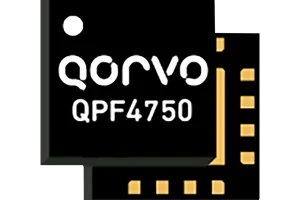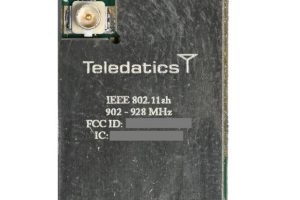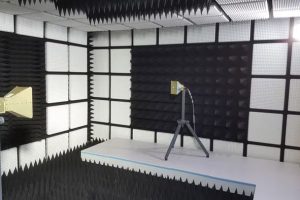The Qorvo QPF4750 is an extreme wideband medium power front end module (FEM) designed for Wi-Fi 6E (802.11ax) systems. This FEM implements extreme wideband amplfier technology to create an easier to use and extremely compact solution for Wi-Fi applications where operating on any channel within U-NII1-8’s 2GHz of bandwidth is deisred. The small form factor and integrated matching minimizes layout ...
RF & Microwave
The latest Electronics Weekly product news on RF and Microwave products.
Teledatics plans 1W Wi-Fi HaLow module for kilometre links
Teledatics is planning a 1W (30dBm) Wi-Fi HaLow wireless interface module, according to fabless chip company Newracom, which is supplying the key IC, an NRC7394. The module, to be called TD-Halom, will measure 18 x 13.5mm and 2.4mm high, and operate over 902 – 928MHz, which is only applicable to the Americas (ITU region 2). 30dB is the maximum power ...
mmWave updates gear up for automotive growth
A two-chip cascading imaging radar system has been unveiled by Calterah, based on 6T-6R mmWave radar SoCs from Andes Technology. The 22nm CMOS SoCs, which will be available from June 2024, integrate an RF module and include a quad-core CPU with a DSP and proprietary radar signal processor. Flex-Cascading allows the two SoCs to be cascaded through chip-to-chip interfaces. This ...
Novocomms wins £3.6m grant to develop 5G mmWave
Novocomms, the RF antenna design and manufacturing specialist, has secured £3.6 million of funding from the UK government’s Small Business Research Initiative (SBRI) to develop 5G mmWave consumer premises equipment (CPE). To develop “the next generation” of the equipment (routers, network switches, gateways, etc), over the next 13 months, the funding will enable it to recruit up to ten new ...
U-blox offers Bluetooth AoA in Omlox real-time location system
U-blox has created an omlox-compatible indoor asset tracking system based on Bluetooth LE Angle-of-Arrival technology. Branded ‘u-locate’, “it offers every necessary hardware, software and middleware component for indoor positioning, including support for interoperability with the omlox standard”, according to u-blox. “Based on Bluetooth LE AoA, u-locate delivers positioning accuracy down to 10cm while ensuring extended tag battery life.” Omlox, owned ...
RF absorber has 25% biomass
TDK has introduced a radio wave absorber material with more than 25% or biomass by weight. Called the IS-BP series, the foams are intended to line the ceiling, walls and floor of microwave anechoic chambers used to evaluate antennas and wireless communication equipment, as well as millimeter-wave radar for automated driving. They consist of polyethylene loaded with carbon, and there are ...
CML shipping complete broadcast/receive DRM module
CML Micro and Cambridge Consultants announce availability of a complete Digital Radio Mondiale (DRM) broadcast receiver implementation that will enable consumer radio manufacturers to connect communities with low-cost, low-power DRM radio designs. The DRM1000 module will be available for purchase through Mouser, DigiKey, RFMW and other sales outlets. An evaluation and prototyping kit for the DRM1000, the DE9180 is also ...
60GHz antenna-in-package radar IC for industry
Texas Instruments has turned to 45nm RF CMOS process to squeeze a 60GHz radar, including antenna, into an 11 x 6.7mm package only 0.8mm tall. IWRL6432AOP is an FMCW radar that works over 57 to 63.9GHz and at distances up to 25m. It includes: an RF and analogue front-end, an Arm Cortex-M3 processor to configure, control and calibrate the front-end, ...
Exploring the challenges and possibilities of designing to 300GHz
RF and mmWave communications are rapidly advancing towards harnessing the potential of ultra-high frequencies, reaching 300GHz and beyond, says Tudor Williams. This journey, while filled with promise, is laden with challenges regarding designing and manufacturing at 300GHz and there is a need for innovation to make this a reality. As we step further into the era of the IoT and ...
Predicting RF chip reliability with thermal simulations
As electronic content in vehicles continues to rise, designers must find solutions for reliability under intense heat, advises Daren McClearnon. Heat kills semiconductors and automotive environments are notorious for their extreme heat. Accurately predicting RF chip reliability is complicated and costly for design teams using only traditional methods of physical prototyping and measurements. An underperforming design can trigger board layout ...
 Electronics Weekly Electronics Design & Components Tech News
Electronics Weekly Electronics Design & Components Tech News





